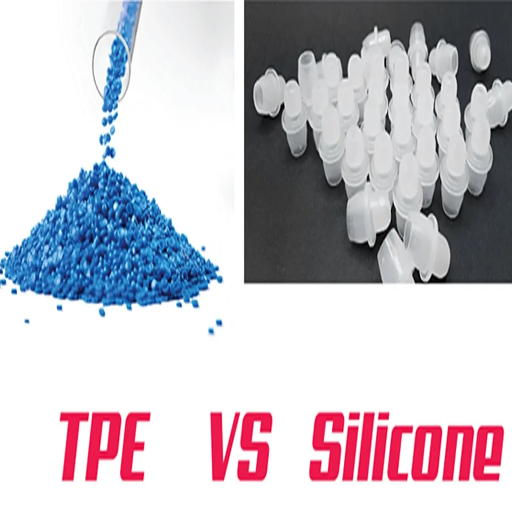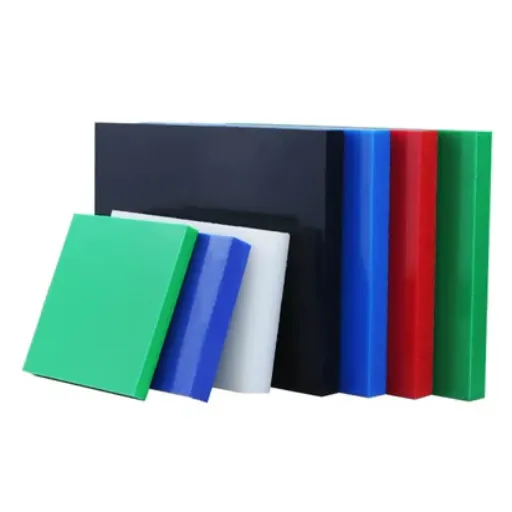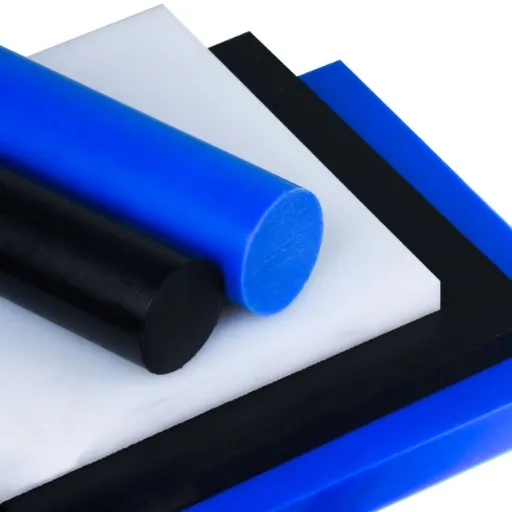Thermoplastic elastomers and silicone rubber are versatile materials used across various industries, including automotive, healthcare, consumer goods, and electronics. But how does one make the best choice when selecting for any given project? Each has more or less its unique properties, which profoundly affect its performance, ability to withstand wear and tear, and price. In the article, TPE and silicone rubber are compared at length, with an emphasis on their defining characteristics, applications, and benefits. Whether you’re a product designer, manufacturer, or enthusiast of materials, this guide will provide you with the insights needed to weigh in on material discussions and make the most of your choice.
Introduction to TPE and Silicone Rubber
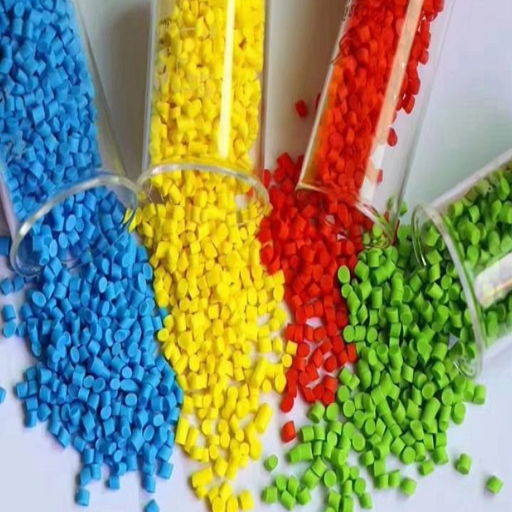
What are TPEs and Silicone Rubber?
TPEs and silicone rubber are versatile materials with distinct properties, used in various industries worldwide. TPE is a class of copolymers or physical polymer mixes, usually plastics and rubbers, that combine the properties of thermoplastics and elastomers. It is highly flexible, lightweight, and recyclable, and is favored for packaging automotive parts, consumer goods, and soft-touch grips.
In contrast, silicone rubber is a synthetic elastomer primarily composed of silicon, oxygen, carbon, and hydrogen. It is known for its great heat resistance, flexibility within temperature variations, and biocompatibility, which is why it finds applications in medical devices, kitchenware, and sealants. Moreover, silicone proves to be highly resistant to water and chemicals, making it favorable for use in harsh environments. Both materials have their virtues, and, therefore, the exact application, choice of price, and significant functional requirements are key decision factors for choosing among them.
Thermoplastic Elastomerngrams
Thermoplastic elastomers (TPEs) are a diverse group of materials that combine rubbery properties with the processability of thermoplastics. Unlike vulcanized rubber, TPEs can be melted, reshaped, and are recyclable, offering excellent production advantages in terms of sustainability and efficiency. Typically, they are formed by combining hard and soft segments, where the hard segments provide the polymer with structural integrity, while the soft segments contribute flexibility and elasticity.
Due to their performance qualities and versatility, TPEs are used in various industries where durability against wear and tear is required, such as in seals, gaskets, and interior components in the automotive sector. TPE has been utilized in the medical sphere because it is biocompatible, for instance, in tubes and syringes, and grips for medical devices. They also offer coloration, overmolding, and a range of texturing options that allow industries such as consumer goods and electronics to apply them for both functional and aesthetic purposes.
Further improvements to the formulations of thermoplastic elastomers give them an edge with enhanced heat resistance, improved mechanical properties, and an environmentally compatible, recyclable variant. These enhancements continue to make TPEs the preferred choice when implementation calls for sustainability and high-performance requirements. Hardness (typically measured in Shore A or D), tensile strength, and elongation at break are a few of the key metrics to inspect for precise TPE grades, which are adjusted on a requirement basis.
Importance of Comparing TPEs vs. Silicone
Thermoplastic elastomers (TPEs) are often confused with silicone materials due to their similar applications in the automotive, medical, and consumer goods sectors. Both exhibit flexibility, durability, and resistance to heat, but they have unique functions that categorize them in several ways. A deep understanding of these distinctions promotes efficiency and functionality through the selection of appropriate materials.
TPEs are popular, particularly as an environmentally sustainable option where eco-friendliness is a consideration; therefore, recycling TPEs would be the preferred choice. TPEs can be readily processed and have short cycle times, allowing them to be tailored in terms of hardness and elasticity. TPEs also perform well at low temperatures and can be overmolded with various rigid plastics, further enhancing their application diversity. This enables them to meet the needs of those who want high performance while also prioritizing eco-consciousness.
Silicone can perform beyond the working range of TPEs in terms of higher temperature performance and property retention. It has better resistance to UV radiation, ozone, and chemicals than any other material, making it suitable for use in outdoor environments that may be subject to high stress. Because it is hypoallergenic and biocompatible, silicone is employed in medical device applications. These properties qualify silicone for uses that require long-term efficacy and safety, albeit at a higher material cost relative to TPE most of the time.
As for the application, material selection in these categories depends on attributes such as temperature resistance, processing requirements, mechanical strength, and budget. TPEs may be desired under applications where cost savings, faster manufacturing, and recyclable materials are all being pursued. On the other hand, silicone is a preferred option for applications requiring ultimate thermal and chemical stability. By analyzing the properties of specific performance parameters, both industries can apply the advantages of the two materials to optimize the outcome of their products.
Properties of TPE and Silicone Rubber
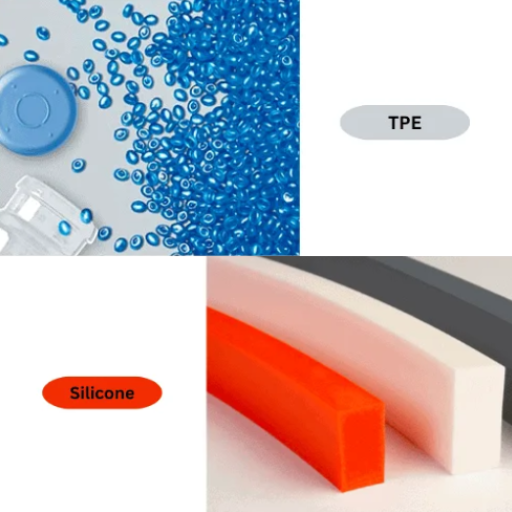
Physical Properties of TPE
Thermoplastic elastomers offer rubber-like qualities and plastic-like molding properties, making them highly sought after worldwide. Due to their elasticity, TPEs provide enough elongation and recovery without any permanent deformation. They have a wide hardness range, which can be selected depending upon the requirement, for instance, soft-touch grips for industrial usage or hard plastics for mechanical components.
TPEs have a low density, which promotes lightweight designs without compromising product strength. Resistance to impact and excellent performance within -40°C to 100°C temperature range bolsters the use of TPEs for the indoor and outdoor type. The material is resistant to many solvents, oils, and chemicals. This property ensures product reliability in rugged terrain. TPEs being easily recyclable give them an edge in reducing costs as well as enhancing the ability to conserve the environment. This, in turn, increases the importance of TPEs in modern manufacturing.
Physical Properties of Silicone Rubber
Silicone rubber, characterized by utmost versatility, delivers an optimal solution for extreme environment applications. Thermal stability is a defining characteristic of silicone rubber, allowing it to operate continuously within a temperature range of -55 to 200°C, although some grades may operate in more extreme conditions. This exceptional temperature resistance toward heat and cold makes it of immense value in automotive, aerospace, and electronics applications.
Apart from excellent thermal resistance, silicone rubber generally exhibits excellent chemical resistance, particularly toward water and mild acids and alkalis. It is also resistant to ozone and UV radiation, thereby preventing surface cracking or degradation over time under outdoor exposure. Moreover, silicone rubber offers excellent electrical insulation, with a typical dielectric strength of 500 V/mil and above, which favors its use in electrical and electronic applications.
Silicone rubber is highly elastic and highly flexible, even when subjected to long-term stress under extreme conditions. They retain a low compression set, so the components remain in their original shape and functional state even after prolonged compression. These physical properties, coupled with biocompatibility, have made silicone rubber a widely used material in medical devices, such as implants and tubing, that require flexibility for durability and safety. These attributes illustrate the adaptability, hence the importance, of silicone rubber in today’s industrial and consumer applications.
Key Differences Between TPE and Silicone
While thermoplastic elastomers and silicones share some similarities, their differences enable each to be tailored for specific applications. TPE is a polymeric blend that exhibits both thermoplastic and elastic characteristics, meaning that these polymers can be melted and reshaped without significant degradation of the material’s properties. This enables a very high degree of reusability during manufacturing or rapid prototyping in the plastic fabrication industry. Silicone, on the other hand, does not offer the luxury of being melted and reused once cured, but it does boast excellent heat resistance and chemical stability compared to TPEs.
In terms of performance, TPEs are typically targeted for the lower end of production cost while being thoroughly serviceable in performance-automotive components, soft grips, and consumer products. Silicone, however, can perform better in applications that require exposure to extreme temperatures and conditions for an extended period than TPE, such as medical-grade tubing, seals, and electrical insulation.
Chemically, TPEs are considered very customizable due to their polymer blend characteristics, which permit manufacturers to modify properties such as hardness and elasticity. Silicone, conversely, is inherently inert, biocompatible, and resistant to UV rays and oxidizing agents, which provide advantageous characteristics for use in safety-critical applications. Additionally, silicone maintains its flexibility and mechanical properties over a broader temperature range (-75°F to 500°F), in contrast to TPE, which is limited at its extremes of cold and heat.
Therefore, the choice between TPE and silicone is heavily dependent on the specific application requirements, such as temperature resistance, reusability, biocompatibility, and cost constraints. Recognizing such subtle differences will help design engineers and manufacturers select the best material that promises optimal performance and product longevity.
Manufacturing Processes: Injection Molding and Overmolding
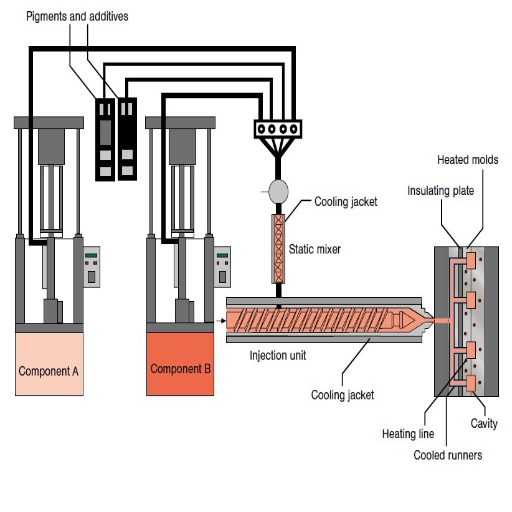
Injection Molding TPE
According to experts, injection molding of TPE (Thermoplastic Elastomers) is one of the most widely used manufacturing processes because it is efficient and flexible, making it adaptable to a myriad of applications. The molding process involves melting the pellets of TPE, forcing them into wells in a mold, and shaping the material into intricate designs and complex shapes under high pressure. Due to TPE’s beauty in elasticity and its ability to undergo repeated cycles of melting and solidifying without degradation, it finds applications in making soft grips, seals, automotive parts, and medical devices.
The injection molding of TPE distinguishes itself through the ability to capitalize on multi-material designs using overmolding techniques. Overmolding enables the bonding of TPE to rigid thermoplastics, resulting in products with either durable soft-touch finishes or enhanced grip capabilities. Advancements in injection molding technology have improved temperature control and flow rates, resulting in reduced waste and enhanced consistency in product quality.
Injection molding of TPE is very cost-effective concerning high-volume runs, presenting opportunities for environmental initiatives. Using recycled grades of TPE and minimizing TPE waste promotes eco-friendly manufacturing. Therefore, these benefits, together with mechanical parameter adjustments such as hardness, elasticity, and color, keep TPE at the forefront of materials required by flexible industries that need performance, including consumer electronics, healthcare, and automotive manufacturing.
Injection Molding of Silicone Rubber
Injection molding of silicone rubber is a widely used method, and therefore, it is a versatile and efficient process employed in a range of industries, from healthcare to consumer electronics. Silicone rubber possesses specific qualities that make it desirable for finishing parts and components that require high precision, such as thermal stability, chemical resistance, and flexibility. The material can withstand operations across a broad range of temperature extremes, making it suitable for applications that encounter such extreme conditions.
The key developments in LSR injection molding technologies have also led to increased opportunities for producing more. Automation and consistent raw material delivery enable manufacturers to enhance their production efficiency while minimizing waste during manufacturing. Achieving intricate designs with tight tolerances also significantly reduces lead times, with some applications, such as medical device manufacturing, benefiting greatly from this, as biocompatible LSR products support stringent regulatory standards.
Mixing these developments in materials and molding allows manufacturers to meet the requirements of lightweight, tough, and accurate components while optimizing the production for cost-effectiveness and quick scalability.
Advantages of Overmolding with TPE and Silicone
TPE-Silicone overmolding offers premium-performance advantages. These combined materials create high-functionality parts requiring durability, flexibility, and aesthetics. The soft-touch properties of TPE complement the heat resistance and biocompatibility of silicone, resulting in excellent finishing for applications in healthcare, the automotive industry, and consumer electronics.
The different layers will create strong adhesion, at least, under the overmolding process with TPE and silicone materials. This is a valuable asset, especially in the development of advanced multi-material assemblies, where reliability is crucial. Overmolding extends the design freedom by allowing engineers to integrate seals, grips, or ergonomic features directly into a product in ways that reduce the need for further assembly steps and corresponding costs.
Of paramount importance are the thermal and chemical resistances of the compositions. Finally, the over-molded components of TPE and silicone shall resist extreme temperatures and chemical exposure, ensuring long-term maintenance. Materials such as these meet very rigorous hygienic and sterilization standards in medical applications and resist wear and environmental stress in automotive and industrial settings over time.
Additionally, the overmolding process contributes to sustainability by minimizing material waste during manufacturing. Advanced molding methods also enable precise control over the amount of material used, minimizing excess and promoting eco-friendly manufacturing. This boost in efficiency and scalability in manufacturing makes the process an impeccable choice for producing large volumes without compromising on quality.
By combining TPE and silicone harmoniously, the most excellent performance, aesthetics, and functionality are achieved through overmolding, meeting the ever-changing demands of modern applications.
Applications of TPE and Silicone Rubber
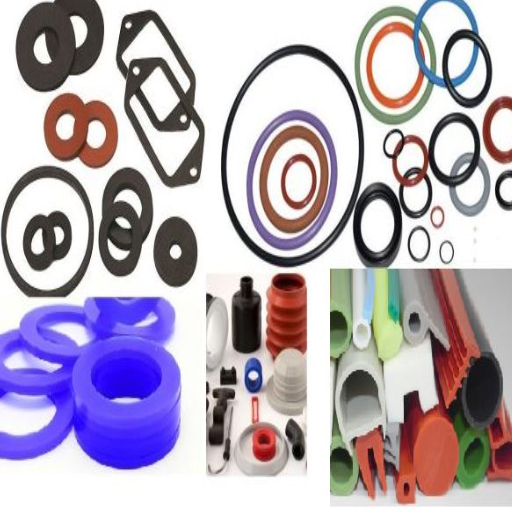
Various Applications of TPE
Thermoplastic elastomers are materials that lend their properties to a wide variety of industries and applications. One of the significant areas of application for TPE is the automotive industry, where it is used in sealing systems, gaskets, and other interior components, such as cup holders, gear knobs, and mats. Its high resilience, durability, and environmental stress resistance guarantee longevity and comfort even under harsh conditions.
More relevantly, in medical applications, TPE has been used in tubing, syringe parts, and grips. They provide a safer and more effective medical device option, as they are biocompatible, relatively flexible, and sterilizable.
Besides, the placement of TPE in multiple applications ensures the variability of its properties in consumer products. Soft grips for tools, phone covers, and home appliances often utilize TPE. It can be molded ergonomically while maintaining strength, thus standing out as a worthy choice for user satisfaction.
The electrical and electronics industries utilize TPE as an insulation material, in cables, and for connectors. The high heat and abrasion resistance of the product ensures performance in circumstances where safety and durability are given the highest priority.
The application possibilities continue in sports and recreation with yoga mats, midsoles for footwear, and protective gear. Creating a light-weight ambiance interspersed with excellent cushioning makes the users’ comfort and enhanced comfort performance a foregone conclusion. It is indeed the perfect combination of high flexibility, sustainability, and durability that promotes TPE in these applications.
Common Applications of Silicone Rubber
Due to the versatility of silicone rubber, it is widely used in commercial contexts across various sectors, thanks to its characteristics, which include thermal stability, chemical resistance, and flexibility. The automotive industry finds one of its lucrative applications in silicone rubber, where the rubber is used in engine gaskets, hoses, and seals. Silicone rubber, capable of withstanding extreme temperature changes and exposure to oil and chemicals, enables these components to work reliably and last long.
Another critical sector where silicone rubber finds application is the medical field. Silicone rubber is favored in medical devices, such as tubing, catheters, and implants, due to its resistance to sterilization processes and its compatibility with human tissue. It minimizes contamination risks because it is non-reactive, making it suitable for healthcare applications.
In electrical and electronic installations, silicone rubbers insulate the cable, connectors, and keypad. From the standpoint of electrical insulation, silicone rubber also resists moisture and environmental attacks, thus ensuring the best performance in the most demanding applications.
Silicone rubber also forms an integral part of consumer products, such as kitchenware, including baking molds, spatulas, and sealing rings. It is non-toxic and heat-resistant, allowing it to be safely used in contact with food, while its durability ensures it lasts for a long time.
In construction and civil engineering, silicone rubber finds usage as sealants, adhesives, and coating materials. Since it imparts flexibility, waterproofing, and protection against UV, silicone rubber is the primary transfer material for building materials and structural projects where long-term sealing and protection against environmental stressors are required.
A Comparative Analysis of Applications
Comparing the applications of silicone rubber in various industries, such as healthcare, food technology, and construction, can effectively demonstrate the material’s versatility. While these industries share the benefits of silicone rubber’s durability, flexibility, and resistance to temperature variation, the demands inherent in each uniquely define the value proposition.
In healthcare, silicone rubber is primarily sought after due to its excellent level of biocompatibility. The application of silicone in medical devices, such as catheters, implants, and tubing, takes safety and biological non-reactivity into account, where these factors take precedence. Additionally, resistance to sterilization processes makes silicone rubber a reliable choice for multiple uses, a key consideration in the medical environment’s fight against contamination.
On the other hand, in the food industry, silicone rubber’s primary strength lies in its nontoxic nature and being taste-neutral, thus making it suitable for food contact surfaces and utensils. Heat resistance helps withstand cooking and baking temperatures, while its elasticity maintains the structural integrity of molds and seals used in food packaging. These properties ensure health standards but also meet the consumer’s expectations regarding safety.
Meanwhile, the construction industry requires materials that can withstand harsh environments. On these grounds, silicone rubber offers unparalleled alternatives to optimum waterproofing, UV resistance, and long-term flexibility in sealants, adhesives, and protective coatings. Silicone, unlike other traditional materials, typically maintains its effectiveness even when subjected to extreme temperatures and weather fluctuations, making it the best option for ensuring structural integrity.
These three sectors will really prove the versatility of silicone rubber in confronting a diverse set of challenges, each with the benefits of pertinent properties. Whether ensuring biocompatibility for health and safety, keeping food safe, or addressing weatherproofing needs, silicone rubber is well on its way to continued innovation, proving to be indispensable at the heart of many industries.
Advantages and Disadvantages of TPE vs Silicone
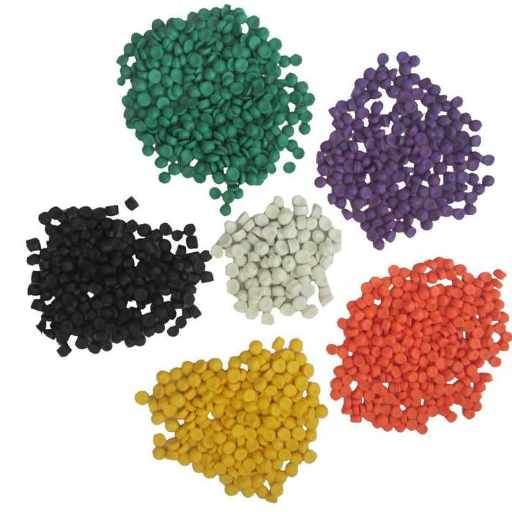
Advantages of TPE
Life has come to me in so many guises that Thermoplastic Elastomers (TPE) present a whole spectrum of advantages, rendering them highly selectable for a variety of applications. First of all, TPE is highly versatile, as it can combine the processing flexibility of thermoplastics with the elastic properties of rubber. This fascinating fusion of properties makes the material easier to mold, thereby facilitating reworking and customization, which in turn reduces production costs and shortens manufacturing cycle times. TPE is a very adaptable material that provides excellent scope for changes during a project so that adjustments to design needs can be made without sacrificing efficiency.
Another significant advantage is its lightweight nature and recyclable properties. In an environmentally conscious world, I believe it is a considerable advantage that TPE can usually be melted and reused, unlike silicone. Typically, TPE is compliant with stringent industry and safety standards, which provides excellent reliability in consumer goods such as electronics, medical equipment, and automotive parts. Regarding client jobs that require performance over time, the material’s natural sturdiness and resistance to fatigue make it suitable for repetitive use.
Finally, I appreciate the broad range of customizability of TPE. Whether the specification requires it to vary in hardness, elasticity, or even neon colors, TPE stands both with and for a wide array of design and functional requirements. Another plus for TPE is its smooth finish, which feels comfortable and pleasing to the eye of users. TPE is often a practical, efficient, and environmentally considerate alternative in many applications where I am allowed to work, and many of the factors stated above contribute to this.
Advantages of Silicone Rubber
Silicone rubber is one of the materials I rely on when flexibility and durability are required. With its ability to withstand temperature extremes from -75°F to 500°F (-59°C to 260°C), it proves to be the ideal material for extreme thermal applications or freezing conditions. I have used silicone rubber in a variety of products for both domestic and industrial applications, as well as in medical devices. In contrast, silicon rubber enables a more thermally stable base, allowing it to perform reliably over a long period, with a wide range of variable conditions that can be tested.
Another key factor I consider is its outstanding resistance to aging from UV light and ozone, making it ideal for field-based applications where environmental agents can compromise its presence. Be it an instance of silicone rubber, which would degrade over time, it will continue to maintain its properties through thousands of hours of testing and days of beauty. Its inherent chemical resistance and inertness also allow me to use it in food and healthcare applications with confidence, knowing it will not contaminate or react.
Finally, the flexibility and softness of the material allow for an unlimited number of design options. The ease of silicone rubber in molding facilitates the creation of complex shapes and intricate details for various projects. Being hypoallergenic and biocompatible, however, is an excellent option in designs requiring skin contact, such as the manufacturing of wearable devices or medical instruments. For reasons discussed above, silicone rubber is a trusted and flexible material in my areas of expertise.
Disadvantages of Each Material
One of the significant disadvantages I often encounter with silicone rubber is its high cost. Unlike other materials, silicone is generally on the higher price side; thus, in reality, pricing can be an issue for some lower-budget projects. Although regarded as a versatile material in various applications, certain types of silicone rubber can become degraded if exposed to a particular chemical or oil for an extended period. Hence, such degradation should be considered when selecting a material. On the contrary, it does not exhibit the extreme strength or high load-bearing capacity of other materials, limiting its application in very heavy-duty situations.
Ut contra alia poterunt esse plus parvo pretio vel quaedam propietates mechanicas, saepe illud illorum silicones omnimodo praestant trade off. For example, thermoplastics may be inexpensive and rigid, but they are brittle and lack resilience during temperature extremes. Metals might provide excellent strength, but flexibility and molding ease are the last things they guarantee when it comes to intricate detailing. This balance of trade-offs means every material I choose has some limitation, which has to be weighed carefully against the unique requirements of each project.
Reference Sources
- TPE vs. Silicone: Which is Better? – Discusses flexibility, durability, and applications of both materials.
- All About the Differences Between TPE and Silicone – Highlights thermal conductivity, fire resistance, and other key properties.
- TPE vs. Silicone – Explores chemical resistance, biocompatibility, and tactile feel.
- How to Choose Between TPE and Silicone Rubber? – Compares wear, oil resistance, and high-temperature performance.
- Thermoplastic Elastomer (TPE) vs. Liquid Silicone Rubber – Explains differences in heat reaction and reprocessing capabilities.
- View PC Plastic Pellets Manufacturers in China
Frequently Asked Questions (FAQs)
How many differences exist between TPE and silicone?
A big difference between TPE and silicone lies in their properties and processing behavior. TPE is a generic name for thermoplastic materials that flex and can be recycled, thereby providing a very economical option for the manufacture of various products. Silicone rubber, on the other hand, is much more durable, can withstand high temperature extremes, and exhibits excellent heat and chemical resistance. Therefore, TPE is often used where silicones cannot be processed easily, such as in applications like consumer electronics and medical devices, for which silicones tend to be much more expensive, particularly when the material is required for longevity and reliability, for example, in gaskets and seals.
What about the safety and durability of silicone and TPE?
From a technical perspective, safety and durability are key factors to consider when comparing silicone to TPE. Silicone is a very durable material that can maintain its properties over time, making it suitable for use in medical devices and utensils. TPE differs; it is durable but may not withstand heat as well, and also may not last as long as silicone in harsher environments. Safety-wise, both materials meet the requirements of international standards; however, the decision between them should be based on the application.
What are the melting points for TPE and silicone rubber?
The melting point of TPE varies depending on its type, typically ranging from 200°C to 230°C. Silicone rubber, meanwhile, does not have a conventional melting point, as it cannot be melted; instead, it is cured through a chemical reaction. This allows silicone to retain its integrity at higher temperatures, which is desirable in applications where heat resistance is needed. The melting points and curing methods of these substances help define their prospective applications.
Can one use TPEs in an injection molding process?
Definitely! Because they are very versatile and easy to process, TPE materials are the most commonly used in injection molding processes. They are insubstantially difficult to mold into complex shapes and exhibit good compatibility with other materials, including plastics and amorphous rubber. Thus, TPE is a great choice when intricate components have to be manufactured in consumer electronics or automobile parts. On the other hand, numerous factors contribute to the success of silicone injection molding in producing seals and gaskets, especially in cases where they need to withstand heat and chemicals.
What are the advantages and disadvantages of silicone and TPE?
Silicone, being exceedingly durable, resistant to high temperatures, and biocompatible, is a significant advantage, making it suitable for medical applications. Nevertheless, silicone, compared to TPE, has a higher price and may require specific processing methods. TPE, meanwhile, is cheaper, easier to process, and relatively flexible, although it cannot withstand very high heat as cleanly as silicone. Analyzing the pros and cons of both is crucial in determining which one will be most suitable for your specific application.
How does TPE compare to liquid silicone rubber (LSR)?
TPE and liquid silicone rubber (LSR) represent two families of materials with divergent properties adapted to opposing applications. LSR is injected in a fluid state and cured to form a solid, providing silicone with extraordinary flexibility and endurance. Conversely, TPE is a copolymer that processes like a plastic and offers some level of heat and chemical resistance. While these two materials may be optionally used in similar applications, such as seals and parts for medical devices, LSR generally performs better in high-temperature environments, making it suitable for high-level applications.

